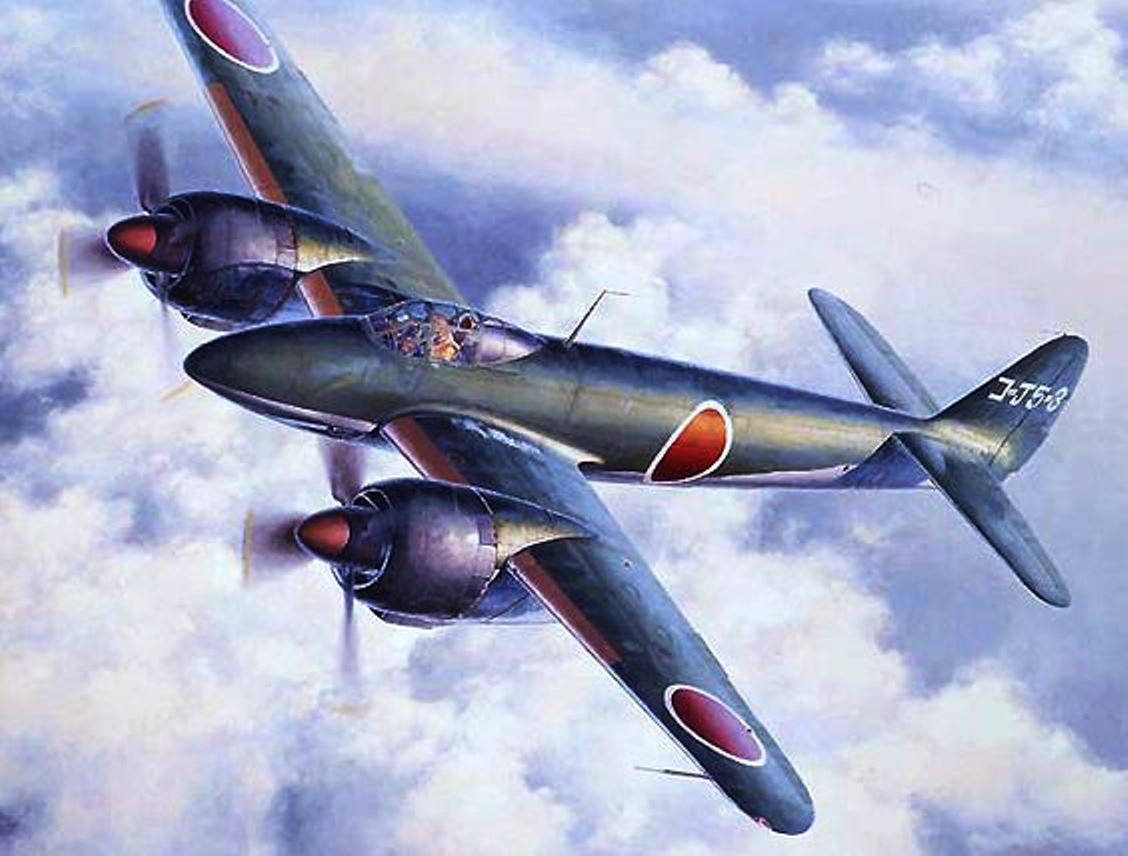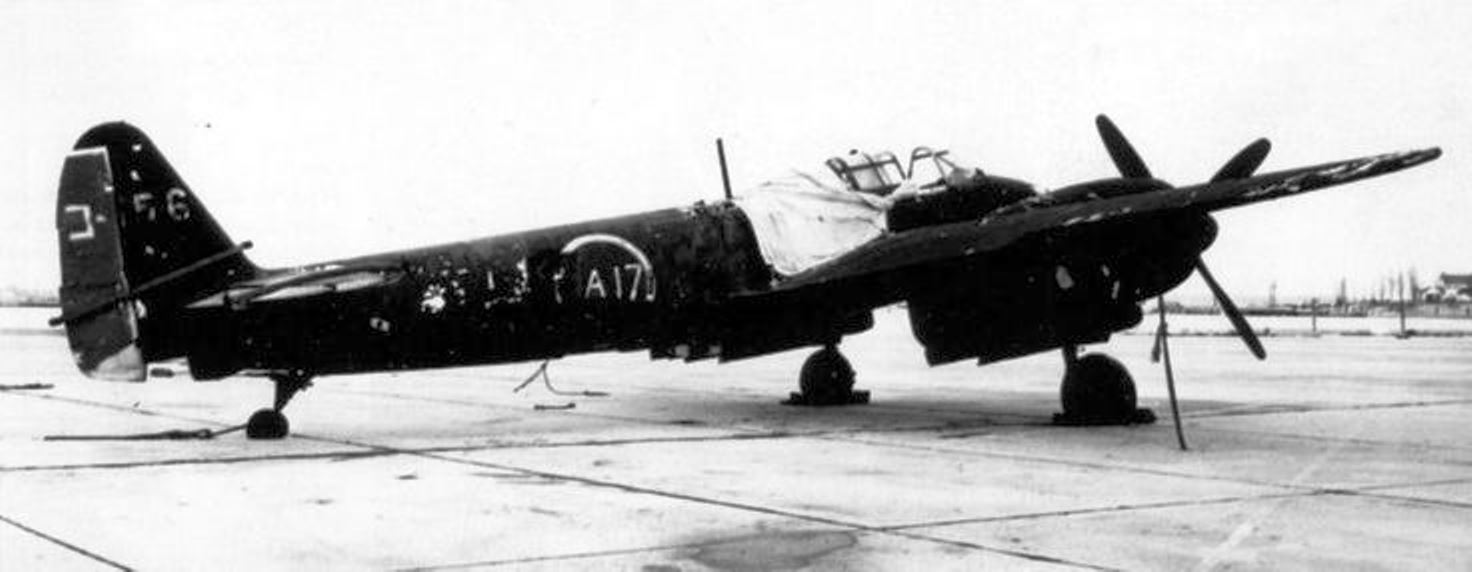Nakajima J5N Heavy Fighter/Interceptor

Imperial Japanese Navy J5NTenrai ("Heavenly Thunder") - 1943-1945
© 2018 Bob Hackett
Spring 1943:
The IJNAF issues an 18-Shi specification for a single-seat twin-engine interceptor capable of reaching a top speed of 414 mph (666 km/h) at 19,690 ft (6,000 m) for countering anticipated attacks by Boeing B-29" Superfortress" heavy bombers under development in the United States.
Nakajima submits a proposal based on the earlier J1N1 Gekko three-seat night fighter, although this new aircraft – designated J5N1 – is slightly smaller. The layout of the J5N is similar to the J1N: a low set wing on which will be mounted the two powerplants, 1,990 hp (1,484 kw) Nakajima Homare 21 18-cylinder air-cooled radial engines.
The J5N1 will have a long fuselage ending in a conventional tail arrangement. Large four-blade propellers are to be fitted which will also feature large spinners. The main wheels will retract rearwards into the engine nacelles, and the tailwheel will be fixed. The cockpit will be set above the wing, and will feature a starboard-opening canopy. The nose will be streamlined to give the pilot an excellent forward view during takeoff, landing and taxiing.
Armament of the J5N1 is to consist of two 30 mm and two 20 mm cannon, and provision is made for a centreline 550 lb (250 kg) bomb. The J5N1 is designed to combat large, heavily armed and fast bombers, so,
it requires heavy armament to inflict severe damage in brief firing passes. The four cannons are to be mounted in the nose of the J5N1.
Impressed with the design, the IJNAF authorizes development of the J5N1 and contracts for six prototypes to prove the design sound - two of which are to be built as two-seaters. The IJNAF assigns the fighter/interceptor the name Tenrai ("Heavenly Thunder.")
1944:
Progress is impeded by the failure of the engines to produce their promised power, and by a steady increase in the weight of the airframe that leads to a drop in performance.
13 July 1944:
The first prototype, lacking armament, makes its first flight. The top speed attained is a disappointing 371 mph -far below the 414 mph requirement.
 July 1944 - February 1945:
July 1944 - February 1945:
Four of the six experimental aircraft are lost to accidents. Despite the other five prototypes having been flown with numerous enhancements, the J5N1 aircraft never achieves its design speed. The project is abandoned.
-Bob Hackett
Back to the IJNAF Page






